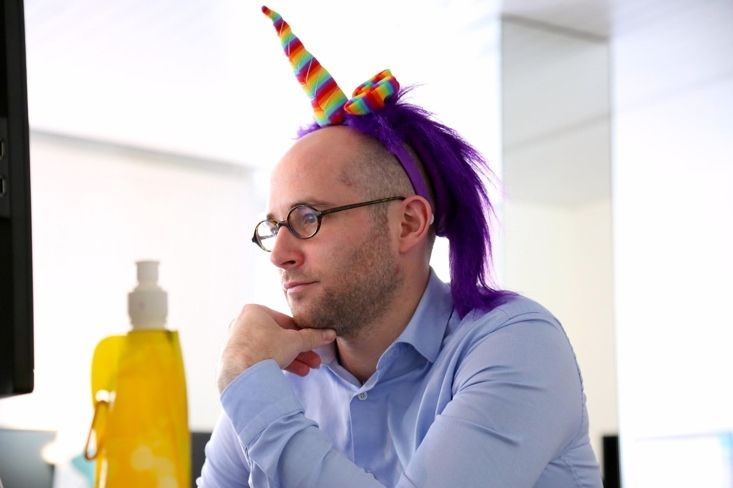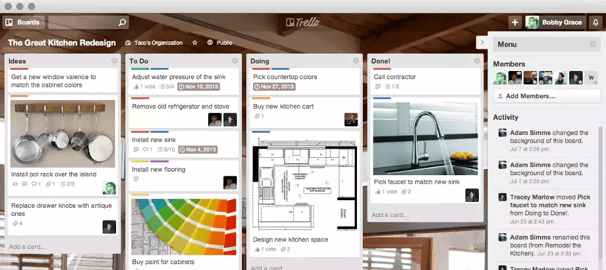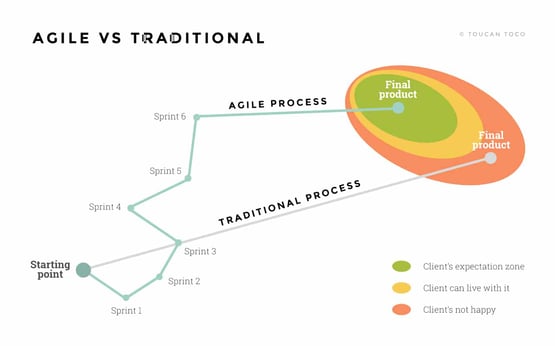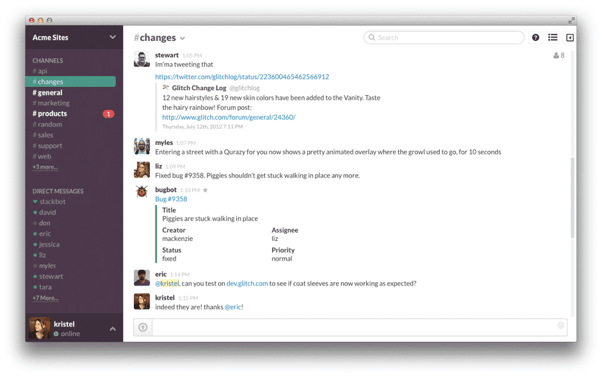
Management response was to strengthen the discipline and organization of development teams through agile methodology.
At Toucan Toco, we have a strong culture of sharing knowledge and best practice. This led us to implement the agile methodology and other methods to all of our teams. Now the marketing, sales and design departments are agile. Here are the results and learnings of the past 6 months.
The developers have created a flexible structure which adapts to the continuous demands of both internal and external players. It allows you to re-prioritize tasks while respecting the broader strategy of a product.
‘Scrum’ and ‘sprint’, ‘agile methodology’ and ‘iterations’ are words that have become symbolic of this very productive organization. Successfully.
The adaptability and increase in transparency of this organization convinced us to apply these methods to all of our teams.
This is how our development team works:
Agile methodology vs Waterfall
The agile methodology is an organization working in short cycles. It enables development teams to manage products in a flexible, adaptive and iterative way. This process offers developers rapid feedback on the product code and allows them to deliver solutions that meet customer expectations.
This method, which focuses on iteration and capturing “feedback”, is in opposition to the traditional waterfall approach. The latter requires a very detailed specification of customer requirements early on in the project. The problem is that it does not leave room for any changes or evolution of the customer’s needs.
It is a bit sad that the only interaction with the client during the project is during the final phase of the project. This method is often a source of conflict. It leaves the specifications open to interpretation, falling short of the customer’s real needs.
The dialogue with our development team has enabled us to transform our way of understanding the overall management of the company.
Adapting Kanban
The ceremony: each team meets for 2 hours every week to talk about the previous week. The objective is to share the elements that worked during the previous week, while also discussing any difficulties that were experienced. The team then defines its upcoming tasks and prioritizes them according to their importance. Each task is divided into several actions to achieve for the week; the aggregation of these tasks is the “sprint” of the week.
So that everyone can keep track of the project’s progress, we use the Kanban methodology. It involves breaking a project down into several tasks. We gauge the difficulty and time needed for each task in order to adapt to the team’s production capacity.
This way of planning the week allows developers to choose tasks to be accomplished during the week in an autonomous way while respecting their priority. The development cycle becomes transparent and tasks are clearer for the team, who can then focus on the tasks that bring real added value to the project.
To view the progress of our projects, we use the tool Trello. The tool allows everyone to see the progress of the tasks. The team moves the task cards from column to column, from ‘in progress’ to ‘completed’.

Stand-up Meetings
Stand-up meetings are a daily meeting, which lasts 10 minutes and are held at the beginning of the day. It is held under the same format as the weekly ceremony. Everyone’s goal is to answer three questions:
What did I do yesterday?
What will I do today?
Where am I stucked, where do I need help?
The goal? To communicate the progress of the tasks and quickly resolve difficulties in order to prevent a slowdown of momentum.
Here are some tips for making your daily report. Do it standing up! The discomfort of this position makes people keep it short and concise. Furthermore, only the person holding the “talking stick” has the right to speak. This can be a fun object or something unusual from the office. It stops people from being interrupted and allows them to quickly finish their brief. At Toucan Toco we use a magic wand.
Fun fact: in some teams, members place a dictionary on their head to increase discomfort. However, this is not the case with us.
The purpose of the Guardian in agile methodology
Our development team possesses the technical knowledge that is essential for the progress of our product. This unique knowledge leads to constant requests from our team, from fixing a bug to changing something in our marketing support.
These constant interruptions created a loss of productivity for our developers. Our answer to this problem was to direct such requests to someone we call the guardian. His/her role? To protect the other developers. This position is filled by a different developer each week.
Regular duties include answering questions from other members of the team, fixing other developers’ codes and dealing with any emergencies. Therefore, the guardian is the only person whose work we can interrupt. We identify the guardian by his/her multi-colored horn.

Charles Miglietti, co-founder of Toucan Toco – Guardian of the week
The rest of this paper deals with the application of the agile methodology to our company.
How can we adopt an agile methodology to marketing?
Here are the results:
Sprints from Thursday to Wednesday
Our weekly planning in sales and marketing begins on Thursday. We adapt to our potential customers. The best days to talk and communicate with our customers are Tuesdays and Wednesdays. That leaves us three days to create content and 2 days to publish and distribute on a large scale.
Trello: Kanban method
The variety of tasks in business and marketing did not allow us to track and prioritize our projects properly. This method was perfectly suited to our need for transparency and for prioritization of our work.
Our challenge was to successfully assess the amount of work and the priority of various projects. Some tasks were always set aside and their priority was undervalued.
By analyzing our performance every week, we have finally been able to estimate our production capacity. This allows us to carry out mid-term projections and to treat all needs evenly without devaluing the priority of a project.
Transforming projects across several cards
The Kanban method is challenging in two ways. The first is successfully breaking down projects into several short and distinct tasks. The second is evaluating the time it will take to complete each task. A scientific approach and testing are required. After several tests, we found the right ratio.
For example, we had a card entitled “Write and publish an article” which took too much time. We decided to split it into two cards. Now we have a task for the writing phase of the article and another for publication. This even distribution allows us to better assess the possible production in a week and plan objectives accordingly.
Understanding the impact of interruptions
Marketing and sales staff are often subject to interruptions and are unaware of their impact. One article argues that each interruption or context switching costs us between 5 and 30 minutes of concentration.
We launched a collaborative chat tool Slack, which allows us to interact in a deferred way, so we are no longer subject to external demands. Therefore, everyone can answer other peoples’ questions without being disturbed several times a day.
See for yourself: how often are you interrupted each day?
This tool stops us from spending more time checking our inbox. Research shows that the average employee looks at his/her emails 36 times per hour.To increase our productivity, we made ourselves focus our discussions on another tool.
Allow time for… the unexpected
A crisis is always the task that was not planned, yet needs to be carried out as quickly as possible. In sales and marketing, we know from experience that the equivalent of three days of team production is generated each week. Therefore, we leave time for the unexpected.
Result: the ability to work with a calm mindset
These working methods allow you to work calmly. We have a better vision of what we can produce and how long it takes us to do it. We now focus on what brings added value to our company.
We are keen on data and reporting, so we made our own performance study based on the past 6 months. Here are the statistics.
Marketing: 30 tickets per week in the first month, 50 tickets in the sixth month.
Sales: 35 tickets per week in the first month, and 60 tickets per week in the sixth month.
The performance in marketing and sales almost doubled thanks to agile methodology. We no longer operate in a chaotic environment and have a guideline that allows us to focus on one task at a time, while leaving time for the unexpected. No more doubt on what to prioritize, no more multitasking – it was a revolution for us.
One company, one working method
The standardization of our organization has allowed us to better communicate across skill sets. The use of a common platform allows us to trace comments and ideas to each department. Developers give us product ideas, we share them and give our customers the features that they want – it’s an exemplary process.
We speak the same language and have the same practices. This common desire to share our organization and productivity methods is the secret of our rapid growth.
So what are your best pieces of business advice?
Written using the Trello card “Write an article about Agile methodology applied to marketing, sales, and design teams”
If you liked this article please share it 🙂
Kilian Bazin, co-founder & CEO at Toucan Toco
About Toucan Toco
Toucan Toco’smission: to contribute to the teaching of transforming complex raw data to data visualization and interactive histories.
Our users: professionals in marketing, production, finance, human resources or large commercial organizations.
From 4 partners to 40 employees in 3 years, we are trusted by more than 80 fortune 100 companies, for 150 projects, including EDF, Total, JCDecaux, Marques Avenue or BPCE.
Toucan Toco small apps are mobile, simple to use, easy to implement, integrated into existing IT services and contribute to operational excellence in HR, marketing, finance, business and branch management.




